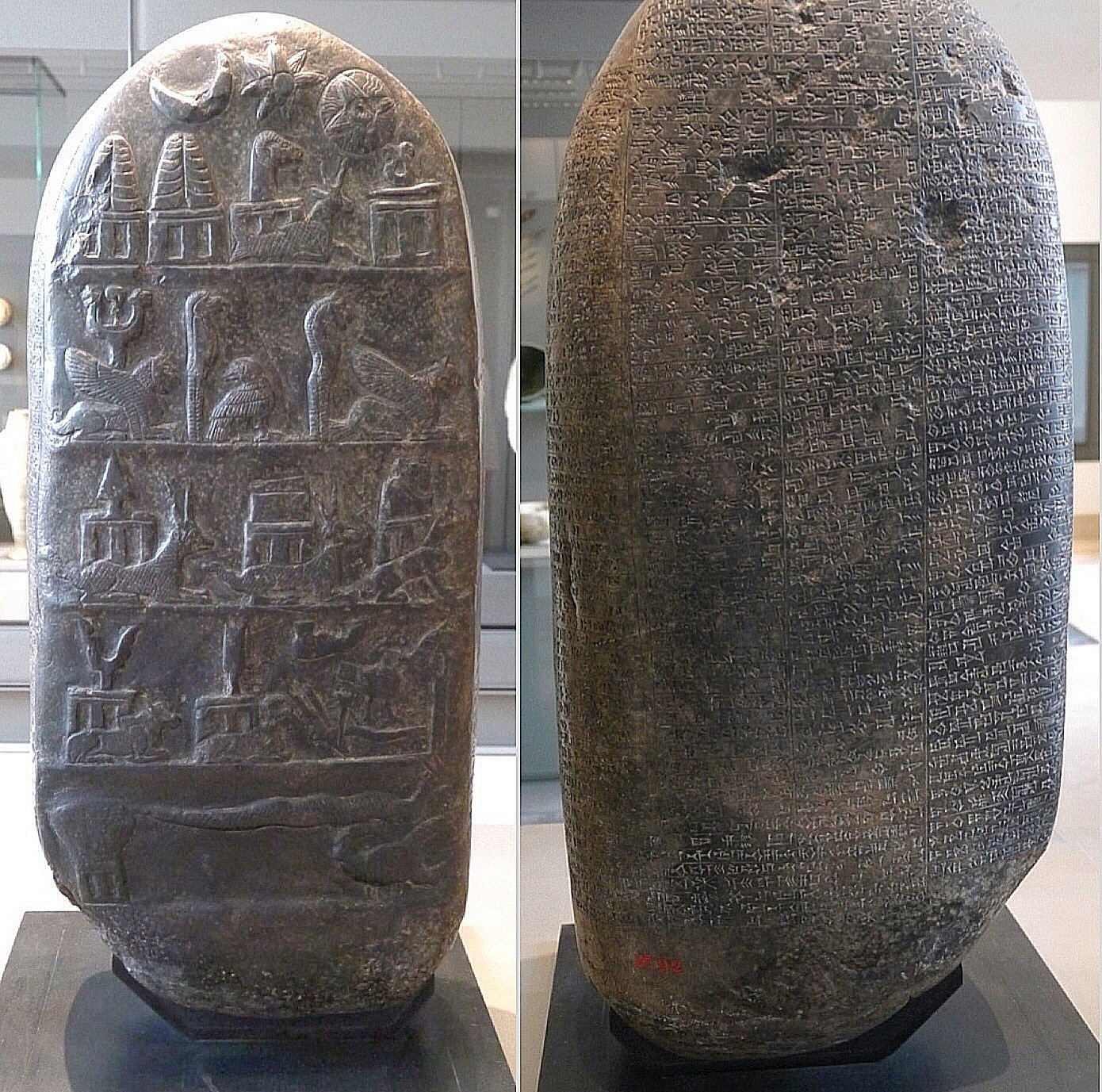Kudurru Of Melishihu – Stone Records From The Kassite Dynasty In Babylonia
A. Sutherland - AncientPages.com - “Do not move an ancient boundary stone set up by your forefathers,” says the Bible book of Proverbs 22:28.
Boundary markers for the property are a very old concept and the Babylonians had the so-called 'kudurrus', stone steles that were sculpted and carved with inscriptions. They were important not only for economic and religious reasons but also as almost the only works of art, which survived from the period of Kassite rule in Babylonia (c. 16th-c. 12th century BC).
A stone document called kudurru (Akkadian: "frontier," or "boundary"), was inscribed with records of land grants and gifts made by various kings of the Kassite dynasty.
The Kassites first appeared during the reign of Samsu-iluna (1749–1712 BC), son of Hammurabi of the First Babylonian Dynasty and after being defeated by Babylon, moved to control the city-state of Mari. Some kudurrus are kept in the Louvre in Paris and others in the National Museum of Iraq.
One of them is Kudurru of Melishihu relief made of gray limestone (H 0.65 m; W 0.30 m) and displayed at the Louvre, Paris, but it was brought from Babylonia to Susa Kassite Period (1202-1188 BC).
This kudurru is dated to the reign of King Melišipak (or alternatively Melišiḫu, who was the 33rd king of the Kassite or 3rd Dynasty of Babylon ca. 1186-1172 BC and he ruled for 15 years. The stone records a land grant to Marduk-apla-iddina, who was his son or successor.
It is worth noting that Meli means servant or slave, Šipak was a moon god, but Šiḫu was possibly one of the Kassite names for Marduk, patron God of Babylon.
On the front of the Kudurru, there is a depiction of the entire pantheon of gods who preserve the order of the world.
The artist has used a formula that was later to be developed on other kudurrus, presenting the symbols associated with each deity in hierarchical rows.
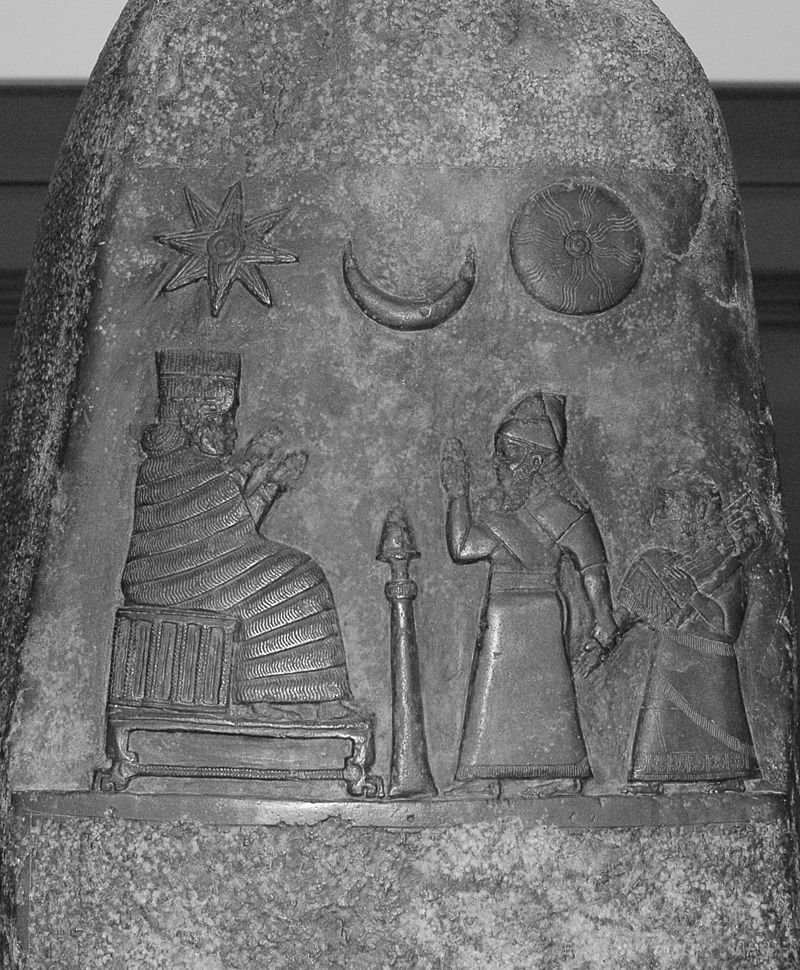
This is another Meli-Šipak-dated kudurru depicting the king presents his daughter to the goddess Nannaya. The crescent moon represents the god Sin, the sun the Shamash, and the star the goddess Ishtar. Kassite period, taken to Susa in the 12th century BC as war booty. Credits: Louvre/Wikipedia
These lists of donations were placed under the protection of the greatest possible number of gods, most often represented in their symbolic form and arranged according to the hierarchy of the pantheon.
However, at the top, are symbols of the three heavenly gods; Sin (moon), Shamash (sun), and Ishtar (Venus), in order of their position in the heavens, rather than their importance.
They were surpassed by the supreme triad:
Anu (sky), Enlil (air) symbolized by their horned crowns, and Ea (freshwater from the abyss), symbolized by a kind of sceptre carried by a goat-fish.
Below we find the emblems of several other gods; that of Marduk, patron god of Babylon, is identifiable as a pointed hoe placed on a stand and the serpent-dragon which guards the underworld of the god.
The same dragon carries the scribe's stylet, which is the emblem of Nabu, Marduk's son. These emblems were difficult to interpret, even for the ancients who sometimes inscribed the name of the gods symbolized next to the symbols themselves.
On the other side of the artifact, there is cuneiform writing describing the gift and the responsibilities to the king as a result of the gift. This is followed by a section calling down a divine curse on anyone who opposed the gift.
Thus, the gift was not only recorded and displayed for all to see but also placed under divine protection.
The original kudurrus were precious in Babylon and therefore, kept in temples where they would be visible to both worshipers and gods, while their clay replicas were given to the landowners to be placed on the land.
Written by – A. Sutherland - AncientPages.com Senior Staff Writer
Copyright © AncientPages.com All rights reserved. This material may not be published, broadcast, rewritten or redistributed in whole or part without the express written permission of AncientPages.com
Expand for referencesReferences:
MacKenzie, D. A. Myths of Babylonia and Assyria
G. Smith, The History of Babylonia
More From Ancient Pages
-
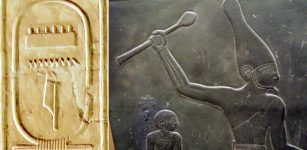 Menes – Legendary First Monarch Probably Under Different Names Who Unified Egypt
Featured Stories | Nov 7, 2016
Menes – Legendary First Monarch Probably Under Different Names Who Unified Egypt
Featured Stories | Nov 7, 2016 -
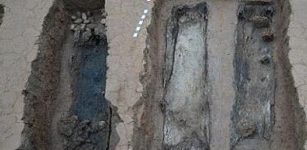 Large Collection Of 2,200-Year-Old Tombs With Boat Coffins Made Of Nanmu Wood, Unearthed In SW China
Archaeology | Feb 10, 2017
Large Collection Of 2,200-Year-Old Tombs With Boat Coffins Made Of Nanmu Wood, Unearthed In SW China
Archaeology | Feb 10, 2017 -
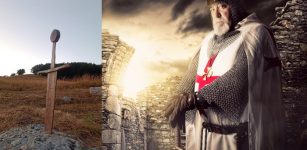 Knights Templar’s Legendary Sword In Stone In Terminillo Mysteriously Disappeared – Where Is It Hidden?
Featured Stories | May 3, 2021
Knights Templar’s Legendary Sword In Stone In Terminillo Mysteriously Disappeared – Where Is It Hidden?
Featured Stories | May 3, 2021 -
 Mystery Of The Lost Anglo-Saxon Queen Cynethryth May Soon Be Solved By Archaeologists
Archaeology | Aug 2, 2022
Mystery Of The Lost Anglo-Saxon Queen Cynethryth May Soon Be Solved By Archaeologists
Archaeology | Aug 2, 2022 -
 Silver And Bronze Coins Discovered In Ancient Roman Fort Apsaros, Georgia
Archaeology | Jul 23, 2018
Silver And Bronze Coins Discovered In Ancient Roman Fort Apsaros, Georgia
Archaeology | Jul 23, 2018 -
 Neanderthals And Modern Humans Diverged At Least 800,000 Years Ago
Archaeology | May 17, 2019
Neanderthals And Modern Humans Diverged At Least 800,000 Years Ago
Archaeology | May 17, 2019 -
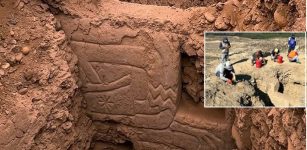 More Than 3,000-Year-Old Multicolored Pre-Inca Mural Discovered At Huaca Yolanda, Peru
Archaeology | Sep 3, 2025
More Than 3,000-Year-Old Multicolored Pre-Inca Mural Discovered At Huaca Yolanda, Peru
Archaeology | Sep 3, 2025 -
 Bjorn Ironside: Famous Viking Who Captured Luna By Mistake Instead Of Ancient Rome As Planned
Featured Stories | Jun 11, 2016
Bjorn Ironside: Famous Viking Who Captured Luna By Mistake Instead Of Ancient Rome As Planned
Featured Stories | Jun 11, 2016 -
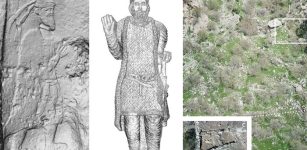 Mysterious 2,000-Year-Old Lost City Of Natounia May Have Been Found!
Archaeology | Jul 20, 2022
Mysterious 2,000-Year-Old Lost City Of Natounia May Have Been Found!
Archaeology | Jul 20, 2022 -
 Machu Picchu: Ancient Incan Sanctuary Intentionally Built On Faults
Archaeology | Sep 27, 2019
Machu Picchu: Ancient Incan Sanctuary Intentionally Built On Faults
Archaeology | Sep 27, 2019 -
 Huge 3,000-Year-Old Mayan City ‘Los Abuelos’ With Pyramids And A Unique Canal System Discovered In Guatemala
Archaeology | May 30, 2025
Huge 3,000-Year-Old Mayan City ‘Los Abuelos’ With Pyramids And A Unique Canal System Discovered In Guatemala
Archaeology | May 30, 2025 -
 What Is The Meaning Of Ancient Hand Signs We Still Use Today?
Featured Stories | Apr 23, 2025
What Is The Meaning Of Ancient Hand Signs We Still Use Today?
Featured Stories | Apr 23, 2025 -
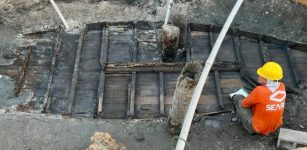 Remarkable Discovery Of A 19th-Century Boat Buried Under A Road In St. Augustine, Florida
Archaeology | Oct 16, 2023
Remarkable Discovery Of A 19th-Century Boat Buried Under A Road In St. Augustine, Florida
Archaeology | Oct 16, 2023 -
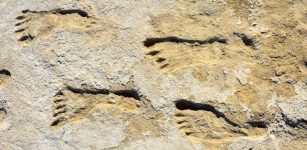 There Is A Problem With The Footprints Claimed As Evidence Of Ice Age Humans In North America – Scientists Say
Archaeology | Nov 16, 2022
There Is A Problem With The Footprints Claimed As Evidence Of Ice Age Humans In North America – Scientists Say
Archaeology | Nov 16, 2022 -
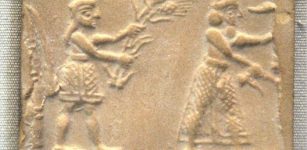 Who Was The Sumerian Ensi?
Featured Stories | Jan 24, 2020
Who Was The Sumerian Ensi?
Featured Stories | Jan 24, 2020 -
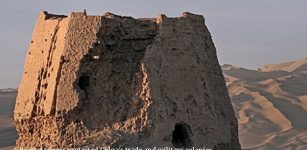 Nine Great Wall Beacon Towers Discovered In China’s Inner Mongolia
Archaeology | Apr 21, 2020
Nine Great Wall Beacon Towers Discovered In China’s Inner Mongolia
Archaeology | Apr 21, 2020 -
 Battle Of Himera: New Study That Contradicts Historical Accounts
News | May 24, 2021
Battle Of Himera: New Study That Contradicts Historical Accounts
News | May 24, 2021 -
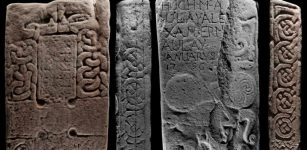 Rare Lost Pictish Stone With Strange Mythical Beasts Goes On Display For The First Time
Artifacts | Dec 12, 2020
Rare Lost Pictish Stone With Strange Mythical Beasts Goes On Display For The First Time
Artifacts | Dec 12, 2020 -
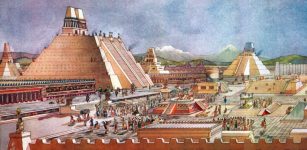 500-Hundred-Year-Old Mystery Of Aztecs’ Death May Have Been Solved – New Study
Archaeology | Jan 17, 2018
500-Hundred-Year-Old Mystery Of Aztecs’ Death May Have Been Solved – New Study
Archaeology | Jan 17, 2018 -
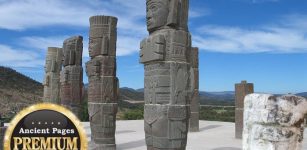 Secret Ancient Knowledge Of The Toltecs Examined
Ancient Mysteries | Aug 16, 2019
Secret Ancient Knowledge Of The Toltecs Examined
Ancient Mysteries | Aug 16, 2019

